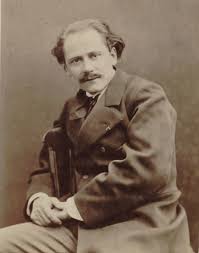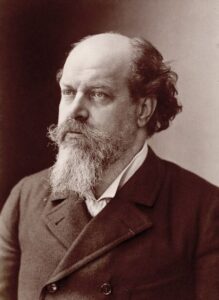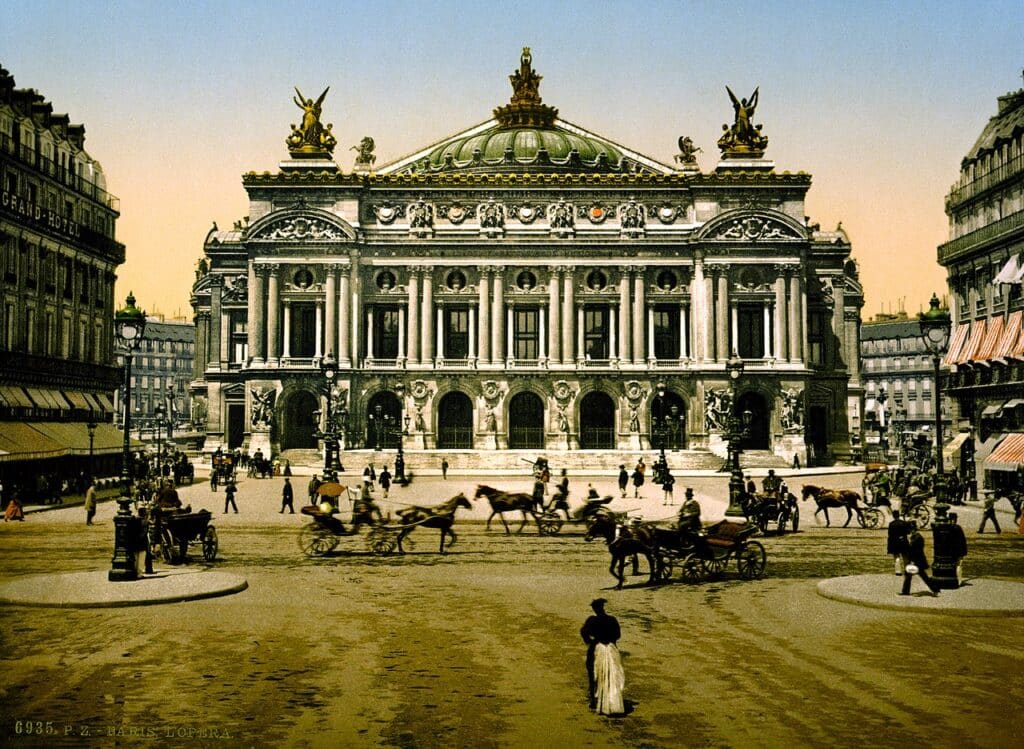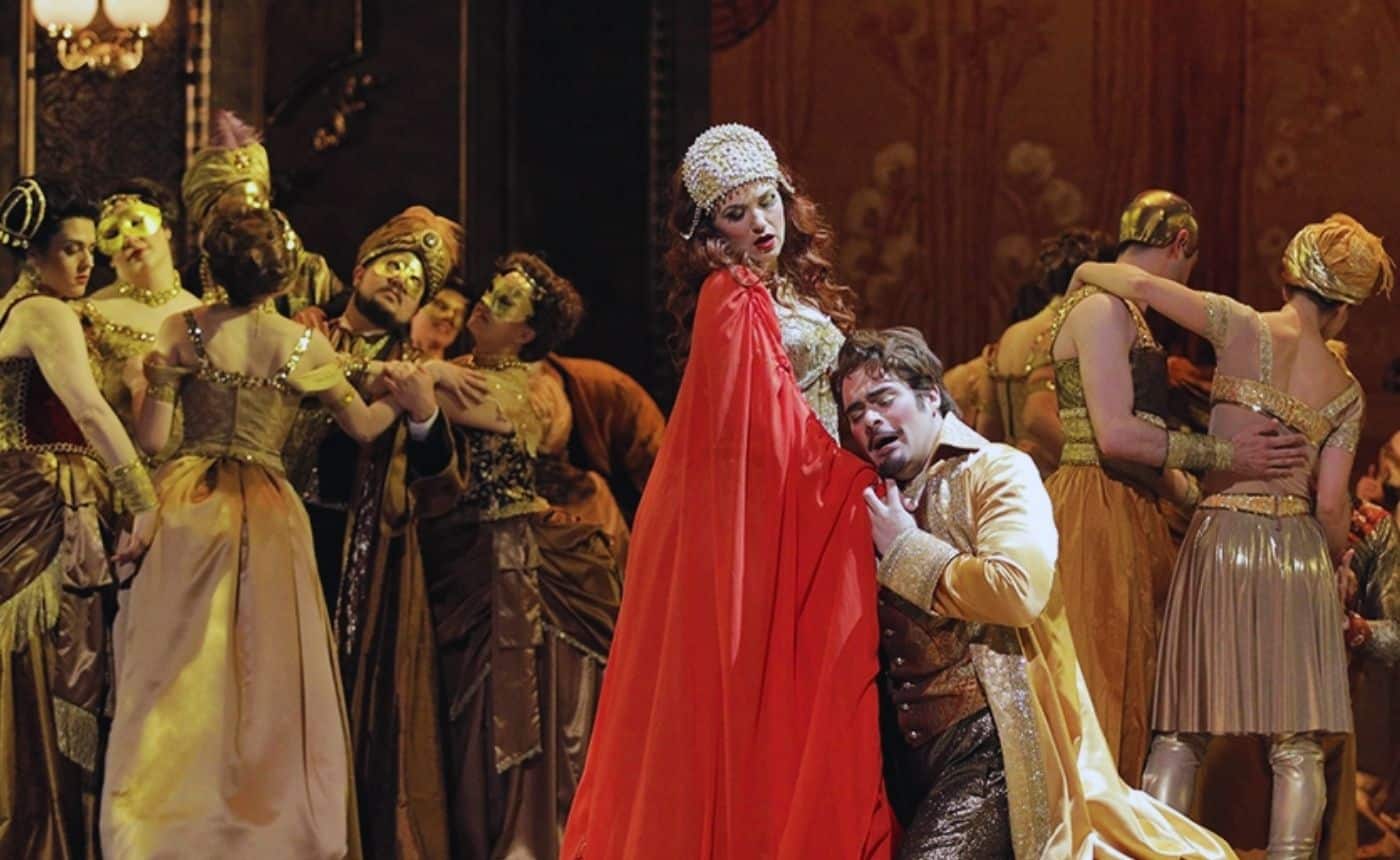Thaïs Online CourseBelle Époque, belle musique

Jules Massenet is the most influential figure of 19th century French romantic opera, composing more than 30 operas in his relatively lengthy career. Though he is not remembered as a trailblazer of opera, he enjoyed success as one of the leading musical figures of the Belle Époque, the period of peace and prosperity sandwiched between the Franco-Prussian War and World War I.
Born in 1842 in the Loire to a prosperous ironmonger, Massenet received his earlier musical training from his pianist mother. By 1848 the family had relocated to Paris, and Jules matriculated at the Paris Conservatoire in either 1851 or 1853 (biographical sources remain unreliable as to the exact date). There, he studied music theory and continued to grow as a pianist. By 1859, the Massenet family’s fortunes had shifted, and Jules was required to support himself as he continued his conservatory work. He taught piano lessons and played percussion in theatre orchestras. This orchestral pit experience proved to be a major influence in his future operatic works as he became acquainted with the operas of Charles Gounod and other important opera composers of the era. Massenet advanced to study composition with Ambroise Thomas, composer of Hamlet and Mignon, and was entered in the competition for the Prix de Rome, a prestigious award that carried with it financial support to study abroad for three years. In 1863 his cantata entry was endorsed by none other than Hector Berlioz, and he was awarded the prize.
After his Rome studies, Massenet returned to Paris where he continued to teach piano lessons and compose music in the popular style of the day. As a prize winner, he was invited to compose his first opera La grand’tante, for presentation at the Opera Comique. Massenet’s musical career was briefly interrupted by the Franco-Prussian war of 1870-71, during which he volunteered in the national guard alongside Georges Bizet. Massenet and his family returned to Paris after life returned to normal. His work ethic was deeply disciplined; he rose early and worked steadily from four in the morning until midday, when he would begin his piano teaching for the day. He was a prolific and fluent composer, rarely revising his work. His first big opera success was the 1877 French grand opera, Le roi de Lahore, based on a story from the Mahābhārata. After its Paris success, Le roi de Lahore was performed across Europe and in England, where the Times commented that “…although not a work of genius proper, [it] is one of more than common merit, and contains all the elements of at least temporary success.” With an appointment to teach composition at the Paris Conservatoire and election to the Institut de France at age 30, Massenet was established as a successful figure in the Parisian music scene.
![A painting of a 19th-century salon adorned with patterned wallpaper, artwork, and drapery. Four women and a man are gathered around a piano as another man plays. In the background a man leans on the bannister of a staircase. A large bouquet of flowers in a vase is placed on a pedestal table to the left of the piano.”]](https://usuo.org/app/uploads/sites/3/2024/04/Massenet-and-Sybil-Sanderson-rehearsing-Manon-1.jpg)

The 1884 opera Manon proved to be Massenet’s first international triumph, with performances across Europe and North America, and Manon continues to be regarded, along with Werther, as Massenet’s greatest contributions to the opera repertoire. In 1887 Massenet met the American soprano Sibyl Sanderson, who had moved from California to Paris with her socialite mother and sisters after the death of her father, a successful attorney and former California Supreme Court Chief Justice. She was enjoying success on the stages of the Opera Comique and Paris Opera, and quickly became Massenet’s favorite soprano (and rumored paramour). She became the most gifted interpreter of the role of Manon, and Massenet composed Esclarmonde and Thaïs to suit her unique vocal gifts.
The libretto of Thaïs was adapted from Anatole France’s novel of the same name by librettist Louis Gallet. Gallet was a government social services administrator by day, and created dozens of libretti, both for operas and cantatas, for composers including Camille Saint-Saëns, Georges Bizet, and Massenet. His libretto for Thaïs is particularly interesting, as it was composed in unrhymed free verse, inspired by declamatory texts of Greek dramas. The inherent challenges of dramatic adaptation mean that some significant information from France’s novel had to be omitted. For instance, Thaïs’ back story of a childhood raised in hidden Christianity isn’t part of the libretto, and much of the thought process leading to her conversion is absent from the opera. The lengthy orchestra numbers were likely intended to take the place of these subtextual moments. For instance, the famous “Méditation” for solo violin portrays her night of spiritual struggle.

Thaïs premiered March 16, 1894, at the Opéra Garnier in Paris. Sibyl Sanderson had a wardrobe mishap during her dance of enticement to Athanaël, which resulted in a topless striptease. The opera was revised significantly for performances at the same opera house in April 1898, and it is this version that is almost exclusively performed for modern audiences. The role of Thaïs is a true “Everest” for soprano performers, requiring flexibility, stamina, and range. The concluding death scene contains multiple high Ds in the score, a particularly daunting challenge at the end of a long evening. Important performers of the role include, in addition to Sanderson, Mary Garden, Beverly Sills, Leontyne Price, Renee Fleming, and Ailyn Pérez.
A sampling of divas in Thaïs’ “Mirror” aria.





